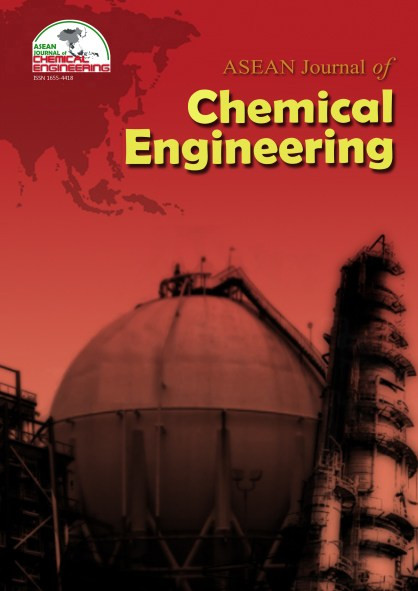Effect of nano-α-Al2O3 Particles on Mechanical Properties of Glass-Fibre Reinforced Epoxy Hybrid Composites
Abstract
The present work deals with the mechanical properties of hybrid nanocomposites made of epoxy/glass fibre dispersed with different weight percentages of nano-α-Al2O3 powder . The nanoparticles were synthesized by a high energy ball milling technique (60 and 200 nm).. The effect of nano-α-Al2O3 size and content (wt%) on mechanical properties, such as tensile, flexural, interlaminar shear stress (ILSS) and hardness was investigated. The addition of nano-α-Al2O3 enhanced all measured mechanical parameters because of their higher surface area and interfacial polymer-metal interaction. The nanoparticle-embedded laminates showed an improvement in flexural strength and hardness compared to laminate without nano-α-Al2O3. Among all the wt% of varied sizes of nano-α-Al2O3, the highest tensile strength was shown by the addition of 0.5 wt% 200nm nano-α-Al2O3 (167.80 N/m2). The highest flexural strength (378.39 N/m2) Vickers hardness (86.72) were observed for laminates containing 1.5 wt% of 60nm nano-α-Al2O3, while the highest ILSS (31.21 Ksi) was observed for 0.5 wt% of 60nm nano-α-Al2O3. This study showed that there was a higher interaction between the nanoparticle and polymer resin, which led to increasing the mechanical properties of the laminate. This finding show that diversifiying the application of these hybrid materials was possible by adding nano-alumina.
References
2. Annual Book of ASTM Standards (1986). "Standard Test Methods for Flexural Properties of Unreinforced and Reinforced Plastics." D 790-86.
3. Annual Book of ASTM Standards (1988). "Standard Test Method for Plastics Properties-Durometer Hardness.” D 2240.
4. Periasamy, P. (2020). “Investigation of electrochemical supercapacitor performance of WO3-CdS nanocomposites in 1-M H2SO4 electrolyte prepared by the microwave-assisted method,” Mat. Lett., 274, 127998.
5. Bahereh, T. M. (2016). “Toughening of Epoxy Nanocomposites: Nano and Hybrid Effects,” Polym. Rev., 56, 70-112.
6. Bhattacharya, M. (2016). “Review-Polymer Nanocomposites—A Comparison between Carbon Nanotubes, Graphene, and Clay as Nanofillers,” Materials, 9, 9040262
7. Chavali, M.S. (2019). “Metal oxide nanoparticles and their applications in nanotechnology,” SN Appl. Res., 1, 607.
8. Fathy, A. (2015). “Effect of iron addition on microstructure, mechanical and magnetic properties of Al-matrix composite produced by powder metallurgy route,” Trans. Nonferrous. Met. Soc. China., 25, 46–53.
9. Ikram, A. (2013). “Mechanical Properties of Micro and Nano TiO2/Epoxy Composites,” Int. J. Min. Mech Eng., 1, 2320-4060.
10. Kang, H. K. (2005). “Microstructure and electrical conductivity of high-volume Al2O3-reinforced copper matrix composites produced by plasma spray,” Surf. Coat. Technol., 190, 448–452.
11. Kardar, P. (2008). “Study the effect of nano-alumina particles on physical-mechanical properties of UV cured epoxy acrylate via nano-indentation,” Prog. Org. Coat., 62, 321–325.
12. Liu, J. (2016). “Graphene oxide and graphene nanosheet reinforced aluminium matrix composites: powder synthesis and prepared composite characteristics,” Mater. Des. 94, 87–94.
13. Melaibari, A. (2019). “Experimental and numerical investigation on strengthening mechanisms of nanostructured Al–SiC composites,” J. Alloys. Compd., 774, 1123–1132.
14. Merad, L. (2011). "Characterization and Mechanical Properties of Epoxy Resin Reinforced With TiO2 Nanoparticles", J. Appl. Sci. Eng., 3, 205-209.
15. Nachum, S. (2010). “The microstructural basis for the mechanical properties and electrical resistivity of nanocrystalline Cu–Al2O3,” Mater. Sci. Eng. A, 527, 5065–5071.
16. Nassar, A. (2012, Dec. 12-15). “Tensile behaviors of aluminum matrix composites in extrusion simulation experiments.” 2nd International Conference on Advances in Computational Tools for Engineering Applications (ACTEA), IEEE, Beirut, Lebanon.
17. Ohashi, M. (2005). “Spherical Aluminum Nitride Fillers for Heat-Conducting Plastic Packages,” J. Am. Ceram. Soc., 88, 2615-2618.
18. Pu, S. (2015). “Disperse fine equiaxed alpha-alumina nanoparticles with narrow size distribution zsynthesized by selective corrosion and coagulation separation,” Nat. Sci Rep., 5, 11575.
19. Rongli, X. (2019). “Preparation and corrosion behavior studies of chemically bonded phosphate ceramic coating reinforced with modified multi‐walled carbon nanotubes (MWCNTs)”, Int. J. Appl. Ceram. Technol., 16, 923-930.
20. Sim, L. (2005). “Thermal characterization of Al2O3 and ZnO reinforced silicone rubber as thermal pads for heat dissipation purposes,” Thermochim. Acta, 430, 155-165.
21. Wagih, A. (2018). “Improving compressibility and thermal properties of Al–Al2O3 nanocomposites using Mg particles,” J. Mater. Sci., 53, 11393–11402.
22. Yun, Z. (2009). “Epoxy/nano‐silica composites: Curing kinetics, glass transition temperatures, dielectric, and thermal-mechanical performances,” J. Appl. Polym. Sci., 111, 917-927.
23. Zhao, R. (2008). “Fracture surface analysis on nano-SiO2/epoxy composite,” Mat. Sci. Eng. A, 483–484, 313–31.
Copyright holder for articles is ASEAN Journal of Chemical Engineering. Articles published in ASEAN J. Chem. Eng. are distributed under a Creative Commons Attribution-NonCommercial 4.0 International (CC BY-NC 4.0) license.
Authors agree to transfer all copyright rights in and to the above work to the ASEAN Journal of Chemical Engineering Editorial Board so that the Editorial Board shall have the right to publish the work for non-profit use in any media or form. In return, authors retain: (1) all proprietary rights other than copyright; (2) re-use of all or part of the above paper in their other work; (3) right to reproduce or authorize others to reproduce the above paper for authors’ personal use or for company use if the source and the journal copyright notice is indicated, and if the reproduction is not made for the purpose of sale.



